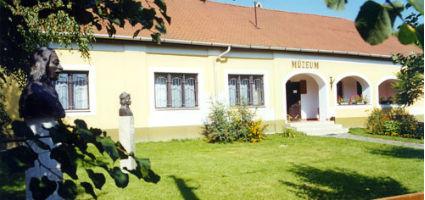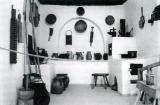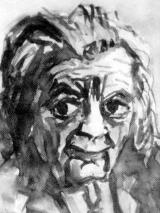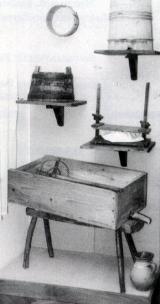2024. April 24. Wednesday
Ferenc Zajti Region Historical Collection - Újfehértó
 |
Address: 4244, Újfehértó Egészségház utca 2.
Phone number: (42) 290-600
E-mail: umuzeum@enternet.hu
Opening hours: Tue-Fri 9-15
Saturdays and Sundays only for groups on prior notice |
Most museums' number 1 monument is the museum building itself, where exhibitions are held and collections are protected. The former dwelling house in the centre of the settlement was built by the Grünberger family in the 1860'ies. It is a mansion house bearing the characteristics of the local popular architecture. The walls are made of mude bricks, the roof was covered by wooden shingles.
Its owner owned about 60% of the land bordering Újfehértó.
After the dragging away of the Jews from Újfehértó, the building was shifted into the ownership of the government. During the decades the building was completely destroyed. The gigantic garden lost its beautiful flower beds and its extremely old trees.
In this state the building was offered to the institute by the government for the establishment of a museological collection. So, besides the setting up of the collection, the building had to be reconstructed as well (according to the original sketches and the museum's demands).
The original design of the house reflects the structure of the peasant houses with three divisions. Its rooms were heated from the porch. The former structuring of the porch shows how accurately the traditional building methods were carried out. In the wall in facing the entrance door there was found an arch that had been upholding the open chimney placed on the top. We reconstructured the arch and built a tile stove that had been made in Vienna in the 1870'ies.
Renovation works took one year and a half. The Újfehértói Town Museum opened its gates before the general public on 27th October 1995.
Most of the items of the present collection were coming to the collection via the inhabitants of the town or purchasing. The founding of our museum proves that a collection which well represents the history of a settlement can be arranged even at the end of the 20th century.
József Buczkó
Its owner owned about 60% of the land bordering Újfehértó.
After the dragging away of the Jews from Újfehértó, the building was shifted into the ownership of the government. During the decades the building was completely destroyed. The gigantic garden lost its beautiful flower beds and its extremely old trees.
In this state the building was offered to the institute by the government for the establishment of a museological collection. So, besides the setting up of the collection, the building had to be reconstructed as well (according to the original sketches and the museum's demands).
The original design of the house reflects the structure of the peasant houses with three divisions. Its rooms were heated from the porch. The former structuring of the porch shows how accurately the traditional building methods were carried out. In the wall in facing the entrance door there was found an arch that had been upholding the open chimney placed on the top. We reconstructured the arch and built a tile stove that had been made in Vienna in the 1870'ies.
Renovation works took one year and a half. The Újfehértói Town Museum opened its gates before the general public on 27th October 1995.
Most of the items of the present collection were coming to the collection via the inhabitants of the town or purchasing. The founding of our museum proves that a collection which well represents the history of a settlement can be arranged even at the end of the 20th century.
József Buczkó



